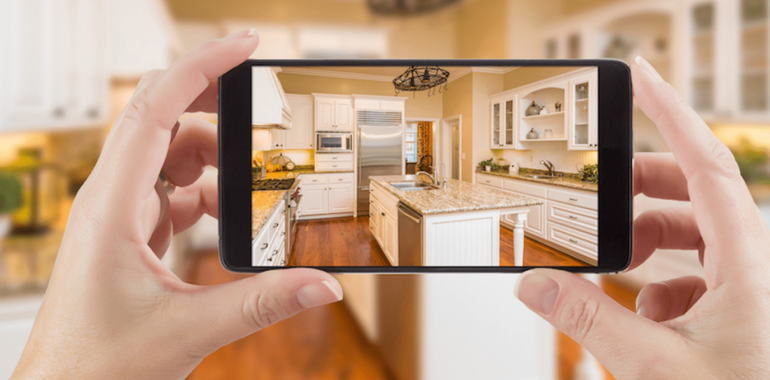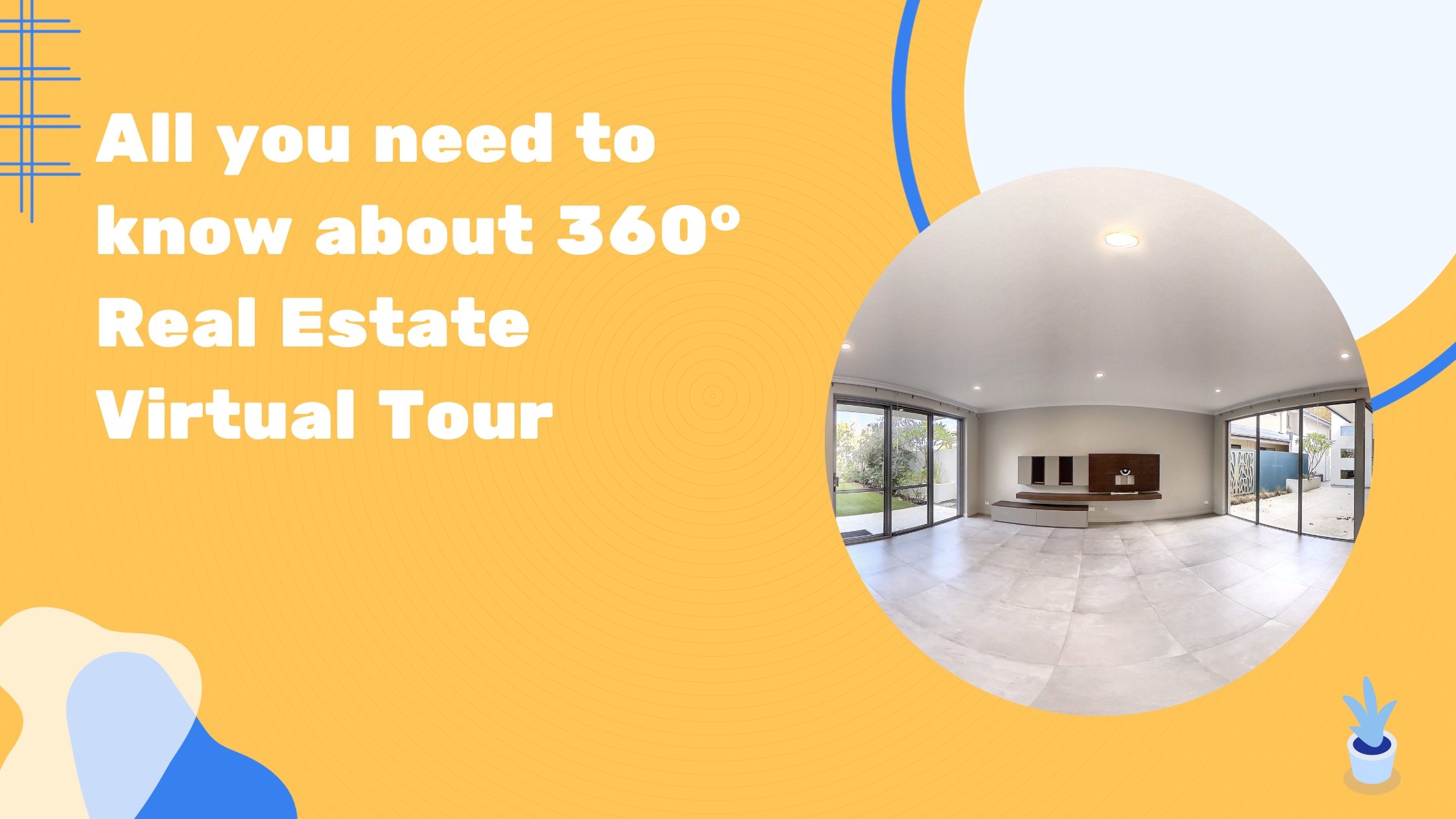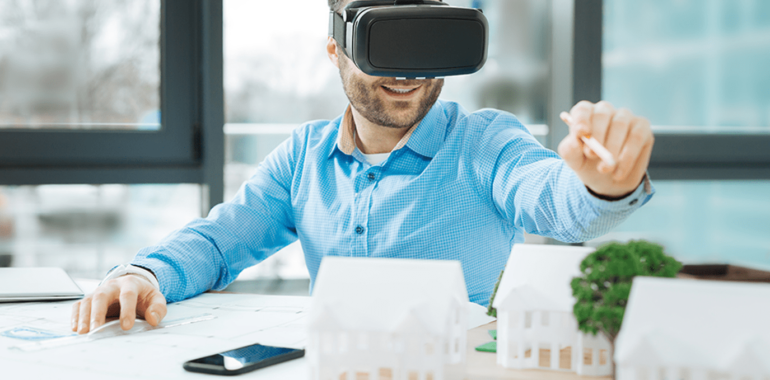Contents
What is a 360 Virtual Tour?
The 360-degree Virtual Tour is an immersive experience. It lets customers see a location at their convenience, no matter where they are located worldwide. Typically, property managers present clients with a lengthy inventory of available properties.
The explanation and negotiations will be discussed afterward. Then, trips to homes and apartments are scheduled. Over time, it’s been similar. However, this can be a hassle and lengthy process for buyers of homes.
The most recent 360-degree immersive technology, along with virtual tour photography that utilizes 360 images, allows for a digital tour of the location. It could be a home, a hotel, an art gallery, hotel, or even a historical structure.
It improves users’ involvement and engagement. An event displayed through mobile and virtual devices in 360 degrees can offer customers the most memorable experience.
Customers can see the entire stage from any position they wish and at any moment.
The Advantages of a 360-degree Real Estate Virtual Tour
It requires a lot of patience and time to purchase properties for business or personal requirements. It is even more complicated when the property is away from the client.
A 360-degree real estate virtual tour lets customers look at the actual property online.
It is a great way to reduce time and cost by avoiding the tour of real estate. These could include guided tours through the site and free navigation on immersive tours. To further elaborate on the benefits, here are four that can be attributed to real estate:
Time-saving
Nothing is as valuable as time. Finding and visiting a new location is a quicker process due to VR. To view virtual tours, there is no requirement to travel to homes for hours and days. Realtors and buyers can use the VR headsets at any time.
 Conserve money
Conserve money
VR is expensive and high-tech initially. Notably, digital tours with high-res quality and commercial-grade features are shown to be worthwhile in the end.
Why is this happening? Agents can save a significant amount. They can eliminate expensive printed ads or staging of properties. The 3D world allows us to see the interior plan and design. The best part is that it can be reused in different places.
 Make an emotional pledge
Make an emotional pledge
Virtual tours can provide a sense of an immersive experience and a real sense of presence. In contrast to 2D printing or browsing on the web, the visitor feels like they’re in the real world.
There’s not a rush. The only thing that is required is the freedom to play and explore. The process of viewing videos or pictures is not the same as moving from room to room by yourself. This can help make the deal more successful by triggering a sense of ownership.
Worldwide distribution
Virtual reality provides close distances between buyers and properties. Thus, real estate firms began to investigate its use for closing deals. Furthermore, it gives an easy way for buyers to see houses.
The report shows that the possibility of closing overseas customers could be greater due to the 360-degree real estate virtual tour, which is viewable even in browsers on the internet.
The world today is becoming more global. People move from one area to another or even across the hemispheres. Virtual reality could help bridge the gap between global demand and real estate supply.
How to Create 360 Tours for Real Estate in 8 Steps>
Virtual tours, including video walk-throughs, 3D virtual tours, and virtual tours that are interactive 360 degrees, enable potential buyers to engage with the home and explore the features in greater detail without having to be present.
To create a virtual tour of your home, begin by choosing the equipment you will use and plan your shots before taking photographs. Additional aspects like setting the tripod at an appropriate level and staging the room, and using virtual tour software are crucial in making the virtual tour.
Many real estate agents are hesitant about making virtual tours due to the perceived effort, time and cost.
However, companies such as Virtual Tour Creators eliminate these obstacles by providing affordable and user-friendly software and a straightforward 3D tour maker that lets you create high-quality virtual tours using your phone.
The toolkit lets you transform your phone into a 360-degree camera and create tours in just 15 minutes. Begin creating virtual tours using Virtual tour creators right now.
Here are eight steps to follow to make 360 tours for real estate more in-depth:
1. Choose the Right Equipment & Software
ONE reason why agents are hesitant to take virtual tours is that they’re confused or intimidated by the required equipment.
They typically think they need sophisticated, top-of-the-line photography equipment and think it will require a lot of training before they can use them effectively.
In actuality, the development of 360-degree and virtual-reality photography has boosted the amount and variety of equipment available.
In reality, specific cameras for virtual tours are extremely inexpensive and user-friendly, meaning you can create your virtual tour right from the box. Of course, other cameras have more features, options, tools, and accessories; however, they come with higher costs.
2. Plan Your Shots
If you are learning how to make an online tour and walk-through, you’ll see that it takes more preparation and planning than simply taking images.
The people who succeed in real estate in the real estate field begin by creating an inventory of each room which should be included in the walk-through of the virtual tour.
Before you shoot, take a walk around the house to find the center of each room, and then make sure that your camera can capture and highlight each room’s highlights from the viewpoint.
If the center isn’t working, locate a location where your camera can pick the best detail. Then mark the area with a piece. Remember that every room is essential to potential buyers.
It’s therefore important to include areas like baths, walking closets, and mudrooms on the virtual tours. A shot list you make in advance will ensure you don’t make any mistakes.
3. Stage Each Room
Once you’ve identified the camera’s location, ensure that the space is as clean as it can be.
At a minimum, you should remove everything in the direction of the lens so that the camera has an unobstructed view of the entire space and remove anything that could distract or appear to be a clutter.
Ensure the room is lit with sufficient lighting so the camera features can easily be observed. The clearer the view is the better the end outcome. To get the most out of every effort, consider staging your home an integral component of the real estate photography and marketing plan.
Staging your home can significantly impact buyers’ views, particularly on virtual tours, where buyers tend to zoom into images and then actively explore every room. Based on the property, it is possible to employ a local staging firm or Virtual staging services.
4. Level the Tripod
If you’re creating your virtual home tour, your tripod should be level so that all pictures are of the same quality. This process will take only a few seconds, but it’s crucial for any video, image, or 360-degree photograph you may make.
Make sure you don’t attempt to make panoramas or 360-degree photos without having a level area to set your camera, or the angles and lines in your photos will appear crooked and unattractive.
If your tripod doesn’t include the built-in bubble level, you can download a tool for leveling using your smartphones, such as the Bubble Level app on the iPhone and IHandy Level.
Adjust the tripod’s level by moving each leg until your bubble has evenly spaced in the middle of the lines.
5. Take Test Shots
Review every shot on your list and highlight the best characteristics when you begin your shoot.
Once you’ve learned to create an online tour of properties, you’ll be able to notice more details in your first image that need to be altered for lighting, camera angle, or the strangely-placed decor.
If you spot something distracting the camera, Move the camera or position the objects in the room to avoid distractions. Be aware of the mirrors, glass, or windows to ensure that your camera and you don’t appear as reflections in the images. If they do, select another location and control the camera from a distance.
6. Take All Photos on Your Image Shot List
With a detailed shot list and proper cameras, you’ll have everything you need to walk through each space on your property to snap pictures. Choose the location you have in mind for each room, put up your tripod, and take photos.
Review each photo on the camera’s screen before moving the tripod. Take a few photos as necessary and ensure that you have all the photos you require before moving towards the next area. It is better to have too many photos than to have too few.
7. Create Your Virtual Tour
After you’ve got all your photos, it’s time to build the virtual tour of your house using the software for the virtual walks you’ve selected. Whatever equipment and tools you require for the creation of the virtual tour will be based on the following steps:

Upload Images to the Software Program
Start by uploading your pictures into your program. If this is your first time making a virtual tour, the software can show you how to create an online tour using simple steps. Follow the steps for adding panoramic or static images.
The software will join static images to create 3D virtual tours. You can also combine panorama photos to create 360 tours for real estate.
Add Extra Features
Most software applications include additional features to enhance your and the user’s experience. These include audio descriptions, interactive hyperlinks (also known as hotspots), music, and texts.
Based on the software you choose, you can click on the settings tab or the edit button for an option of extra features you can add to the virtual tours you have created. Viewers can move back, zoom, or alter directions with their mouse after the tour is completed.
Outsource if necessary.
Virtual tour software companies make the procedure easy, but it doesn’t mean every agent is a pro or has enough time to complete all the essential pieces of post-production.
Most novice real estate professionals try to complete everything on their own. Still, there are many instances where outsourcing is the best method to produce the most effective tour of the property.
After you’ve created the virtual walk-through, you can use the software to share the tour using either a hyperlink or HTML code to embed the tour into websites, emails, or social media.
Make sure you show your virtual walk-through to the world to create leads in the real estate industry and locate potential buyers for your property. In reality, creating a system to share and promote your walkthrough is better. You can also include it on the marketing plan or open house list.
Types of Virtual Tours
“Virtual tour” is a general term to describe various types of interactive photos or videos. They include video walk-throughs, 3D virtual tours, and interactive and 360-degree real estate virtual tour.
However, the slideshow of images with music is not a virtual tour as it cannot recreate the feeling of strolling through a house.
Walk-through
A walk-through or video tour is precisely what it is: a guided walk-through through the property.
Videos are not virtual tours at all, but they are also the simplest to create with any device, from smartphones to the most advanced technology for digital videos.
Video tours can be made in 10 to 15 minutes simply by wandering around the house with your smartphone.
3D Virtual Tour
3D virtual tours aren’t videos; they are interactive experiences that permit users to view 3D images and experience what it’s like to walk through space.
They are made by taking multiple photographs of each room using an eyepiece for a panoramic camera, followed by virtual tour software to join the photos together.
The result isn’t traditional video; instead, the interactive experience lets users see spaces from various angles, rotate around, and return to each room to view the specifics.

Interactive 360-degree Virtual Tour
360 tours for real estate provide an immersive, real-life experience of walking around the estate, similar to wearing a VR (VR) headset.
Of course, creating a panoramic virtual tour requires more advanced equipment and software than other kinds of virtual tours. However, the results will help the listings you have created a stand out from the crowd.
Conclusion:
Virtual tour creators provide prospective buyers with an innovative, enjoyable, and entertaining way to see a home online. There are many kinds of virtual tours available that can help your property listings generate more interest and boost the selling price.
With the appropriate equipment, software, and plan, learning to create virtual tours is easy and could have an enormous impact on the success of your business.



 Conserve money
Conserve money Make an emotional pledge
Make an emotional pledge